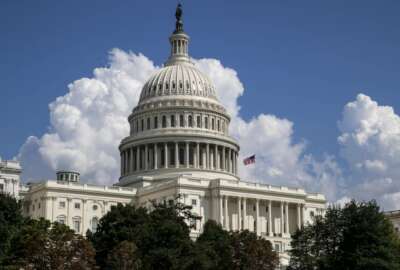The Senate Homeland Security and Governmental Affairs Committee on Wednesday cleared the first of many congressional hurdles in implementing the Trump administration’s government reorganization.
After some debate, the committee decided to move the Reforming Government Act of 2018. The bill essentially authorizes the Office of Management and Budget to prepare a government reorganization plan and establishes a process for Congress to vote on those proposals and pass them into law.
The legislation, sponsored by committee Chairman Ron Johnson (R-Wis.) and Federal Affairs and Federal Management Subcommittee Chairman James Lankford (R-Okla.), originally earned some criticism from Democrats.
“I understand there’s debate about what that reorganization would be,” Lankford said. “That’s completely understandable. Let’s have the debate. Let’s have that conversation.”
Johnson and Lankford used a prior bill from Sens. Mark Warner (D-Va.) and then Sen. Joe Lieberman (D-Conn.) from 2012 as a model for this year’s legislation. Warner and Lieberman’s bill was designed to advance former President Barack Obama’s own vision for government reorganization. It called for the Senate to approve government reorganization proposals with a simple majority.
But Democrats objected to the simple majority vote, arguing that a bill that passes the Senate with 51 votes would be too partisan to spark truly transformative change in government.
“Those proposals that were made before never even got a vote,” committee Ranking Member Claire McCaskill (D-Mo.) said of Obama’s original reorganization ideas. “Because everyone said, ‘What? 51 votes for reorganizing the government?’ I would consider it if it was a 60-vote margin, because then you could be sure that this wasn’t rammed through with partisanship.”
Johnson and Lankford said they understood the concerns, but OMB’s reorganization ideas deserve to be fast-tracked.
“It’s a matter of whether we want to get something done,” Sen. Heidi Heitkamp (D-N.D.) said. “What we do has permanency. It’s my understanding that the Lieberman-Warner proposal never got a vote and never became law. That failed, that experiment of 51-votes failed. … I’m tired of the yo-yo of government. We need to be sitting down in a bipartisan way and coming to a conclusion on how we’re going to structure and oversee and provide the critical stability for agencies.”
Johnson was ready to table the legislation so that committee staff would have more time work out a compromise.
But the before the markup ended, Heitkamp and committee leadership agreed to keep a simple majority on the condition that five senators from each party would serve as cosponsors of OMB’s eventual government reorganization plan.
The committee agreed to the legislation unanimously, thus sending it to the Senate floor for debate.
Reps. Jody Hice (R-Texas) and Mark Meadows (R-N.C.), chairman of the House Oversight and Government Reform subcommittee on government operations, introduced a companion bill last week.
OMB Deputy Director for Management Margaret Weichert has said the administration identified 10-to-12 proposals from its reorganization plan that it can accomplish without Congress, though she wouldn’t — at least publicly — specify what many of those proposals were.
At the same time, Congress is also broadly complicating the administration’s reorganization plans. Lawmakers included a provision in the 2018 omnibus spending package that prevented agencies from appropriations to “increase, eliminate or reduce funding for a program, project or activity” without earning congressional approval first, and similar provisions are in several 2019 appropriations bills.
Copyright
© 2024 Federal News Network. All rights reserved. This website is not intended for users located within the European Economic Area.
